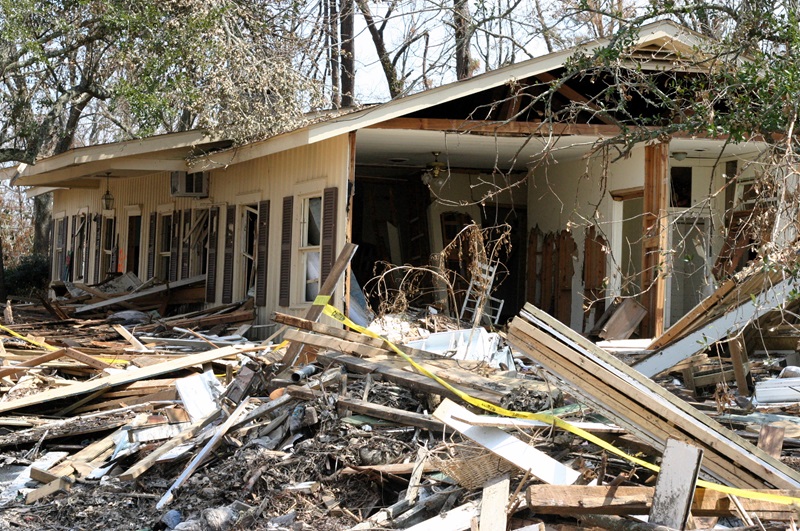NatCats 2024: Building back now? Or better?

Insurers must be “courageous” when facing the tension between building back now and building back better in the aftermath of a natural disaster, panellists at the National Insurance Conference of Canada said Monday in Vancouver.
The panel session, ‘Building Back Better,” had a full house after four natural catastrophes in Canada over the summer set a record for total annual insured NatCat losses ($7.6 billion). The previous record, set in 2016, was $5.3 billion (2020 dollars) and included the wildfire destruction of Fort McMurray in Alberta.
In the wake of natural catastrophes, insurers and governments often feel pressure from policyholders to “build back now,” as noted by panel moderator Paul Kovacs, executive director of the Institute for Catastrophic Loss Reduction (ICLR). But this impulse to respond quickly has been to the detriment of doing the right thing, which includes factoring resiliency into the rebuild.
“We have to build back smarter, right?” Kovacs said, referencing remarks by panellist Rebecca Denlinger, retired deputy minister of Emergency Management B.C., the ministry of public safety and solicitor general in B.C.
“For our industry, we’ve had a history of indemnifying people,” Kovacs said. “You have a policy and you put them back — put them back in the floodplain, put them back in the risk of a wildfire. We can think differently as an industry.”
Kovacs referred to the Canadian P&C insurance industry paying out a record of about $4 billion in 2016 to rebuild homes in Fort McMurray after a wildfire destroyed the town. But some of the rebuilt areas were in floodplains, Kovacs noted. And, in April and May 2020, severe flooding caused insured damage of more than $562 million in Fort McMurray.
Panellist Graham Haigh, senior vice president and chief operating officer at Wawanesa Insurance, said the P&C industry needs to be more “courageous” about insisting resiliency is part of a rebuild, even if the ideas may be politically unpopular.
Also in the news: How drivers learn to ignore autopilot systems
“We have to show more courage as an industry and a variety of stakeholders in dealing with building resilience into our communities,” said Haigh. “Because I can tell you right now, and I’m looking at some of my counterparts on the insurance side out in the audience, we are rebuilding buildings with vinyl siding and asphalt shingle roofs, and we know full well that those are not going to be sustained through the next [wildfire] event that definitely is coming.”
Haigh referenced the construction of the Red River Floodway, or “Duff’s Ditch,” around Winnipeg in 1962-68, after a major flood in 1950 caused more than $553.5 million (1991 dollars) in damages. The $72-million project, 60% funded by the federal government, was named after the Manitoba premier, Duff Roblin, who came to office advocating for construction of the floodway.
The purpose of the project was to re-route water overflowing from the banks of the Red River away from the City of Winnipeg. The Floodway required the excavation of 100 million cubic yards of earth to form a ditch 29.4 miles long, 700 to 1,000 feet wide at ground level, and ranging in depth from 30 to 40 feet, as Manitoba Historical Society observes. The public was divided about whether to pay for the ditch, with critics of the day saying the project was “approximating the building of the pyramids of Egypt in terms of usefulness.”
Roblin was voted out of office, in part due to public opposition over the cost of the ditch. But the project was hailed as saving Winnipeg from major flood damage after the “flood of the century” in 1997, among other flood-related NatCats.
“It saved tens of billions of dollars over the last 30 years,” Haigh said of the Floodway. “I think they’ve identified three or four flood events that it prevented in the City of Winnipeg. So, we have to show greater courage. We have to take a bit of a hit [from the public, who will ask], ‘Why are you doing those types of things?’”
In a somewhat counterintuitive argument, Matt Godsoe, director of the resilience and economics integration of Public Safety Canada, said governments and the insurance industry need to be more pragmatic about resiliency than they have been in the past.
Godsoe defined what he called the “virtuous” approach to resilience, which is to encourage the public to retrofit homes with resilient features in advance of a natural catastrophe. That emphasis on pre-event resilience should be de-emphasized, he proposed.
“I think we’ve learned in the last couple of decades that we need to shift into a more pragmatic-based approach,” Godsoe said. “What that means is, we need to stop fighting against human psychology, where we know that people are most willing to build back better, to build resilience into the system at the individual, community and national level, after large-scale events.
“We need to stop fighting the political expediency of responding after disasters. We know it’s hard to try to get attention from elected officials at all levels of government before disasters occur, and [that] they will do almost anything in the immediate aftermath of events to coordinate and work together.
“So, let’s take advantage of that. Let’s stop working against the fundamental economics of trying to, when we’re building back, add additional resilience into the system, rather than just retrofitting in advance.”
Feature image courtesy of iStock.com/ParkerDeen







